12 Stunning Ways to Transition From Kitchen Tile to Wood Flooring
Creating a smooth transition between your kitchen tile and wood flooring can make or break your home’s flow.
You want these two different materials to work together harmoniously, not fight for attention.
Let’s explore twelve gorgeous approaches that will help you achieve that perfect, seamless look you’ve been dreaming of.
01. Creating a Seamless Level Surface
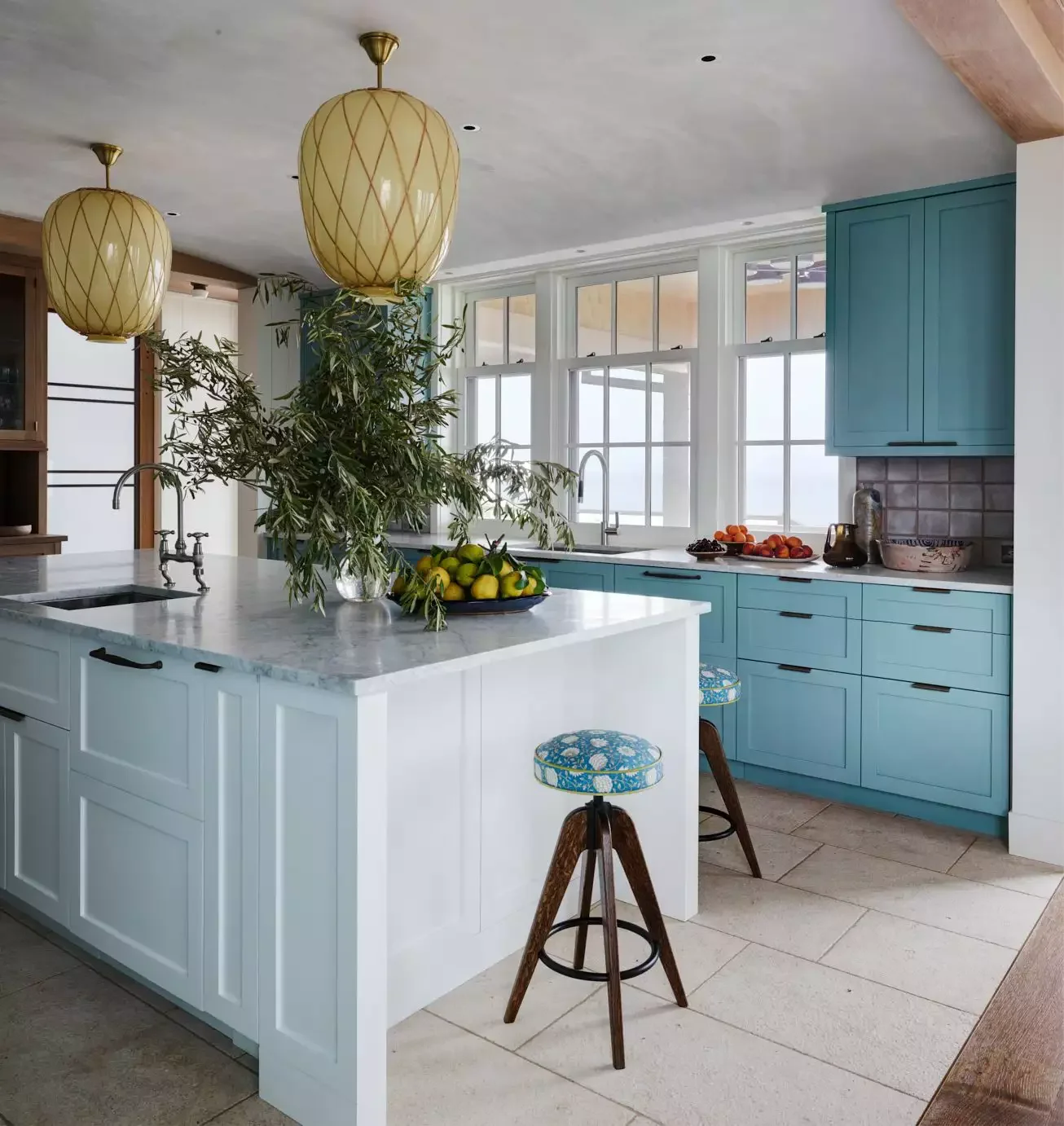
Credit: Kligerman Architecture & Design / Photo by Richard Powers
70K+ People Bought this $29 game-changer Last Month (The Reviews Are Insane)
You can achieve the most professional look by keeping your tile and wood at exactly the same height.
This means adding plywood under your wood flooring or adjusting your subfloor in tiled areas. The result is a beautifully smooth transition that flows effortlessly from room to room.
02. Embracing Rich Dark Tones
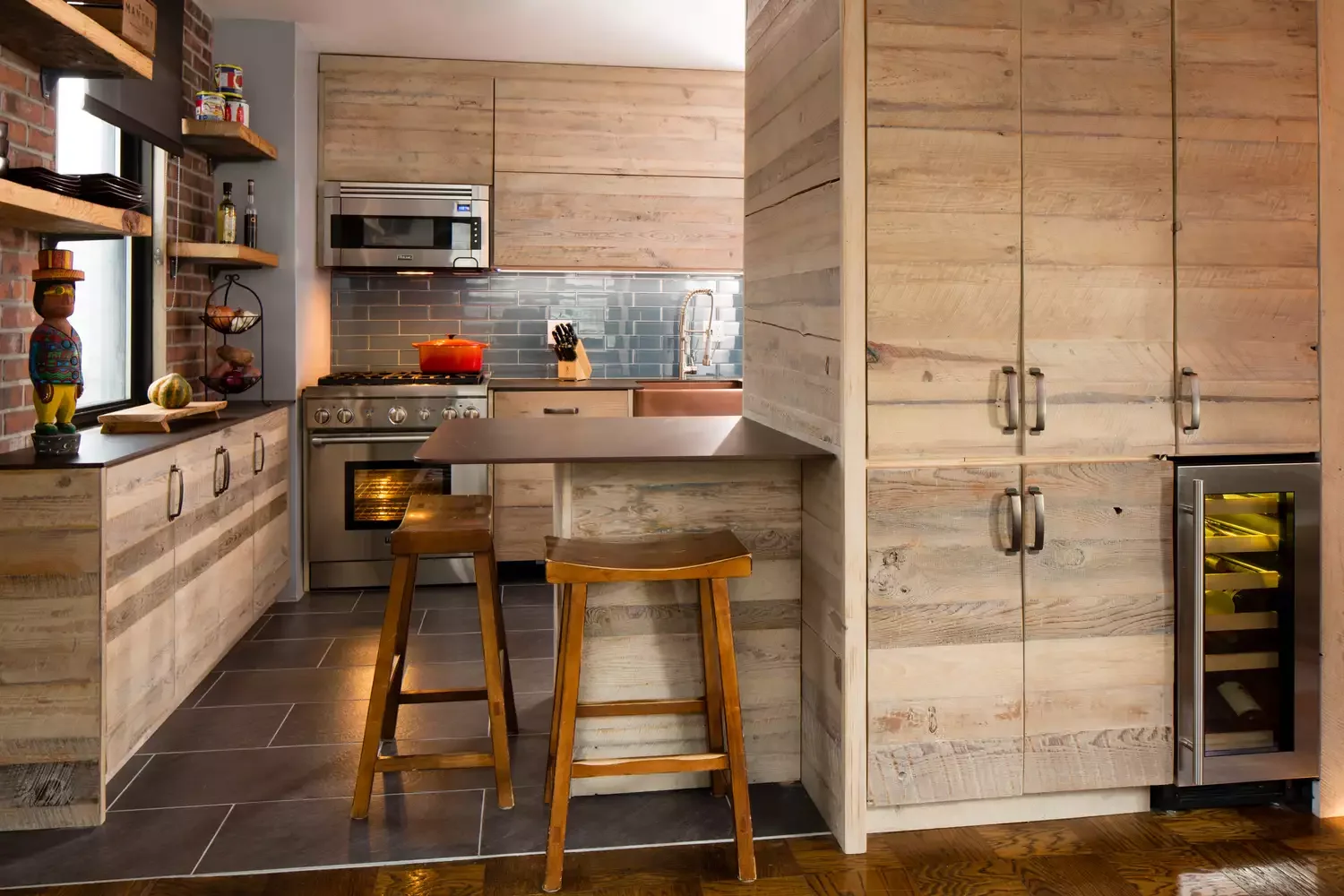
Credit: Design by Arthur Zobel of Zobel & Co. Kitchens / Photo by Chris Sanders
Dark tile flowing into dark wood creates an incredibly sophisticated and cohesive look throughout your space.
You’ll love how this approach makes your home feel unified and elegant. Pair it with lighter cabinetry to add visual balance and prevent the space from feeling too heavy.
03. Making a Statement with Geometric Shapes
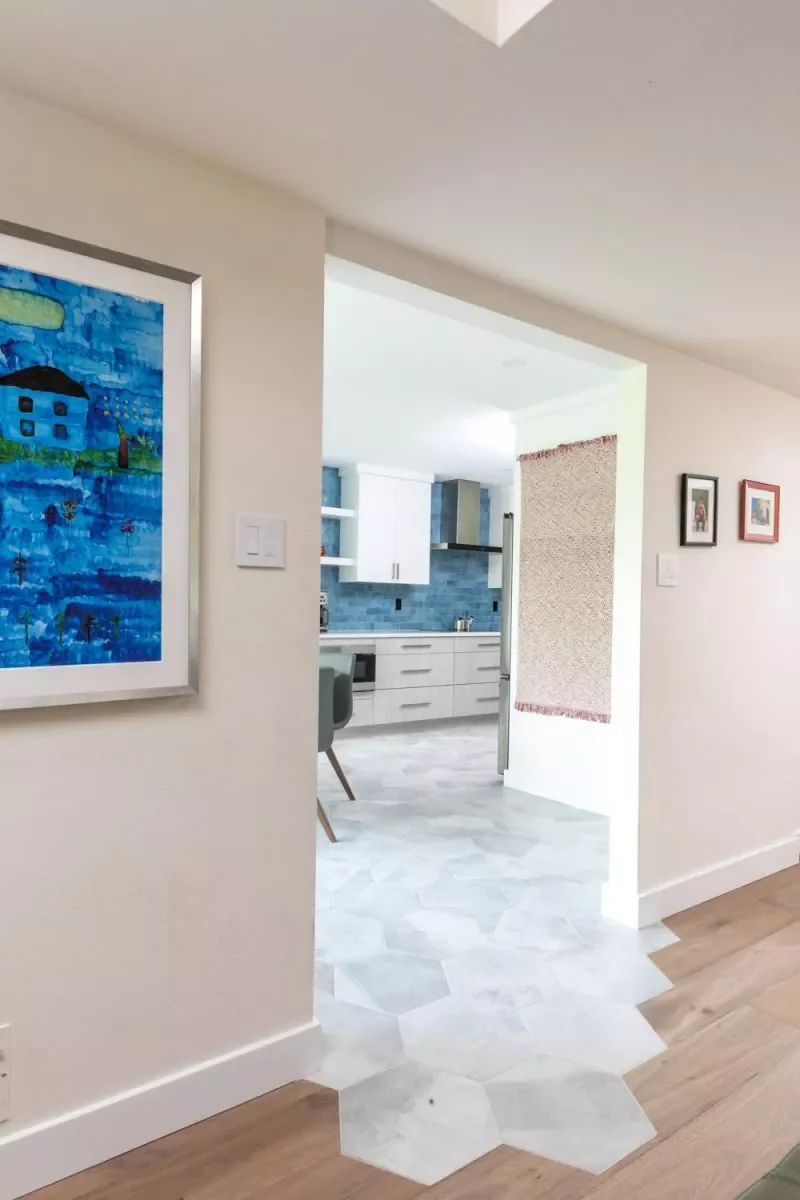
Credit: Design by KBF Audi / Photo by Renee Alexander
Hexagon tiles offer you the perfect opportunity to create an artistic transition that extends beyond your kitchen boundaries.
This bold choice adds serious visual interest and personality to your home. It’s definitely more eclectic, but the results are absolutely stunning when done right.
04. Blending Different Wood Tones
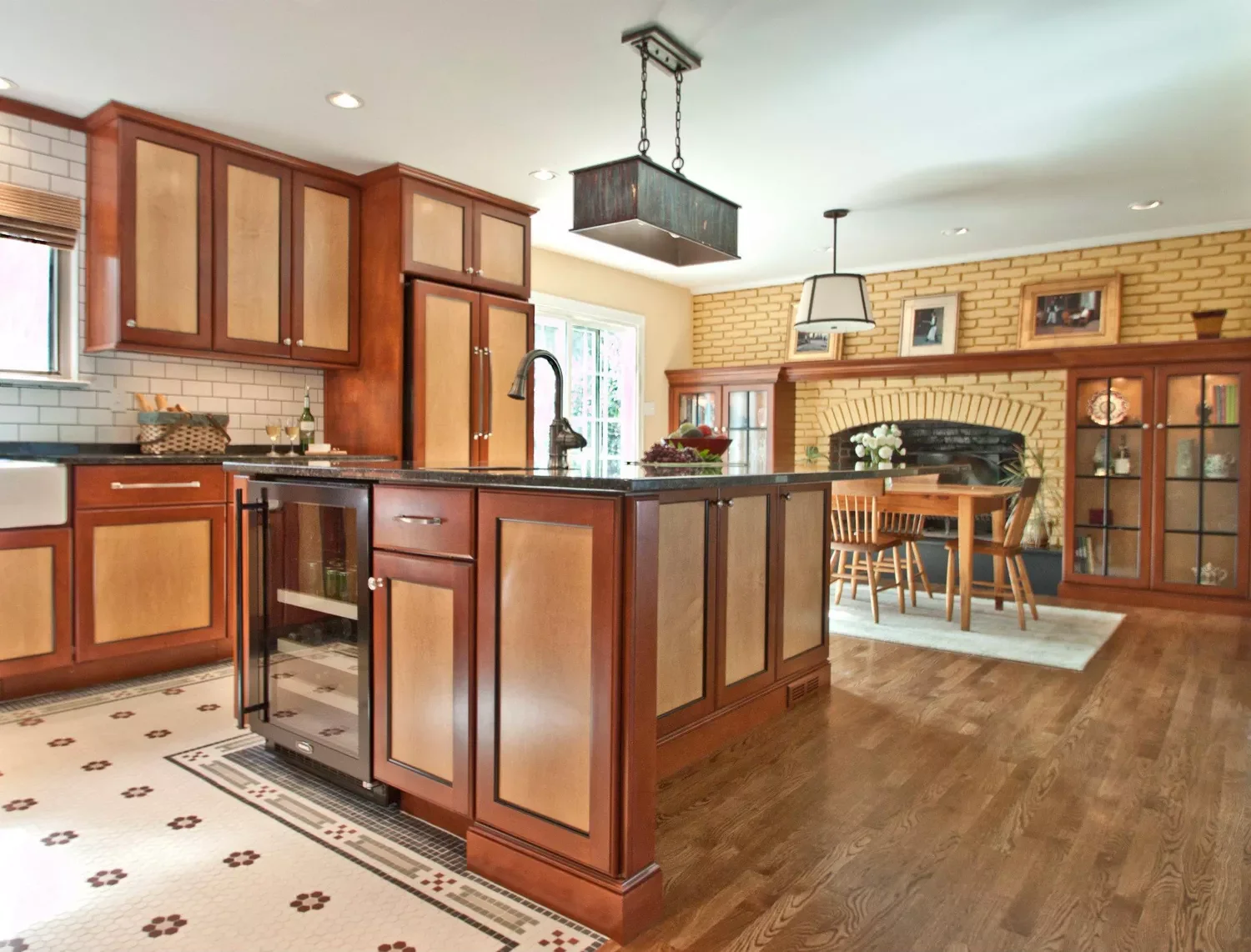
Credit: Cameo Kitchens
Don’t be afraid to mix warm wood tones throughout your space – the results can be absolutely gorgeous.
Penny tiles create a cheerful bistro-style foundation that complements various wood shades beautifully. Your wooden island and warm flooring will work together to create a welcoming, cohesive atmosphere.
05. Contemporary Contrast with Area Rugs
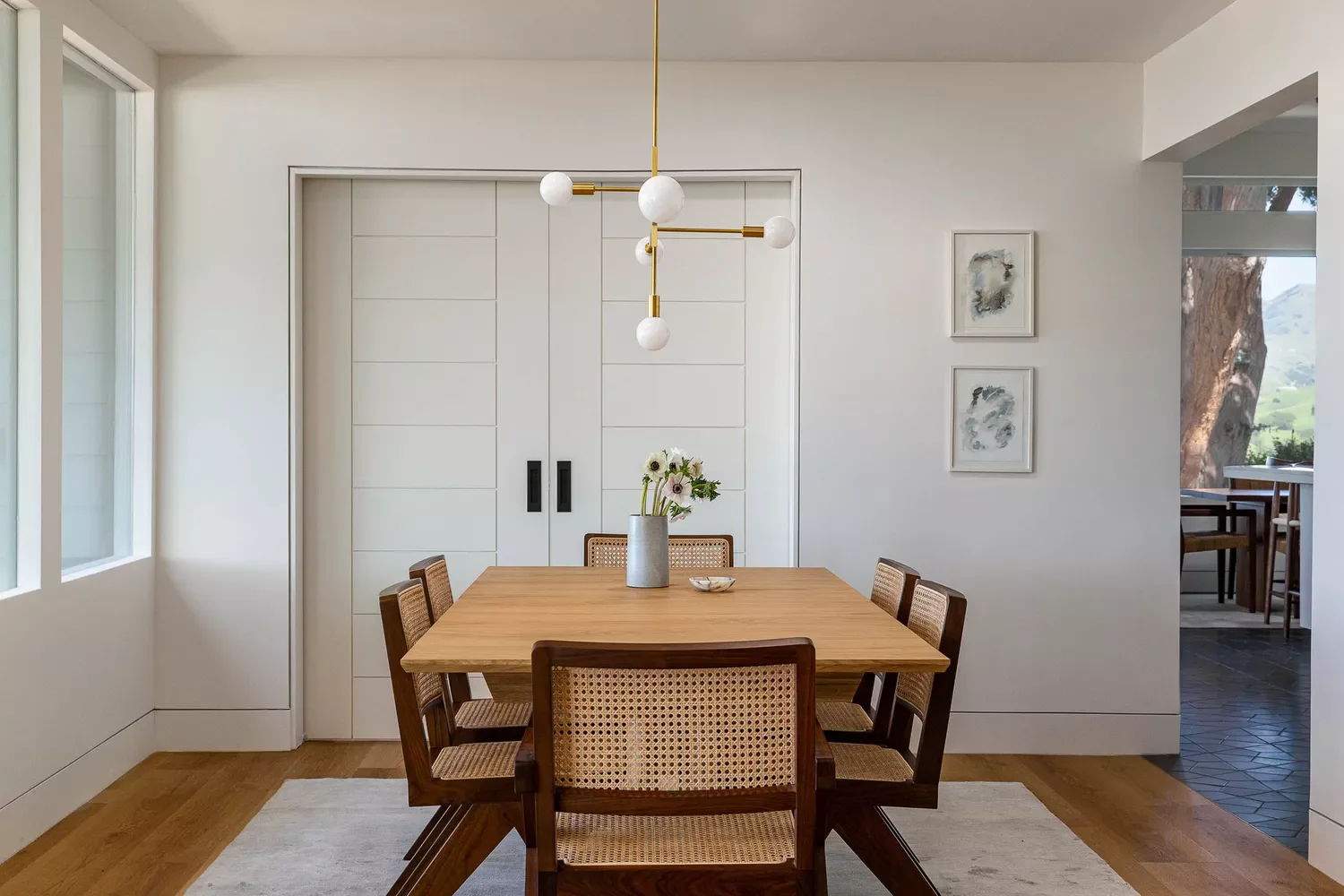
Credit: Califia Home Design / Photo by Kathryn MacDonald
Dark kitchen tiles bring instant contemporary sophistication to your minimalist home design.
You can brighten the adjoining dining space by adding a crisp white area rug over your wood flooring. This simple trick creates visual separation while maintaining that modern aesthetic you love.
06. Timeless Black and White Checkerboard
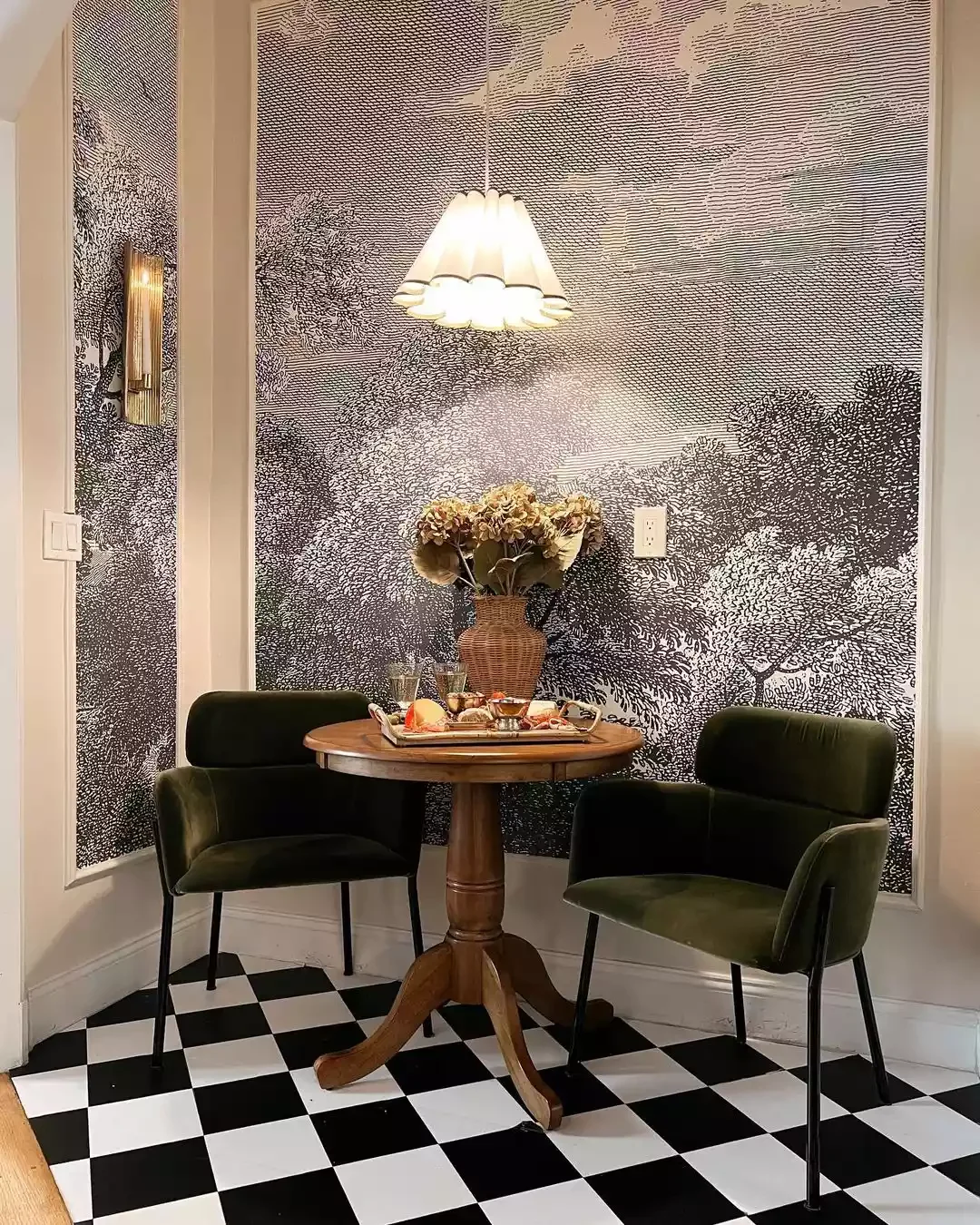
Credit: @annawpage / Instagram
Classic checkerboard tile never goes out of style, especially in traditional prewar apartments and historic homes.
This timeless pattern pairs beautifully with original warm wooden floors throughout the rest of your space. You’ll appreciate how this combination honors your home’s architectural heritage.
07. Adding Curves for Visual Interest
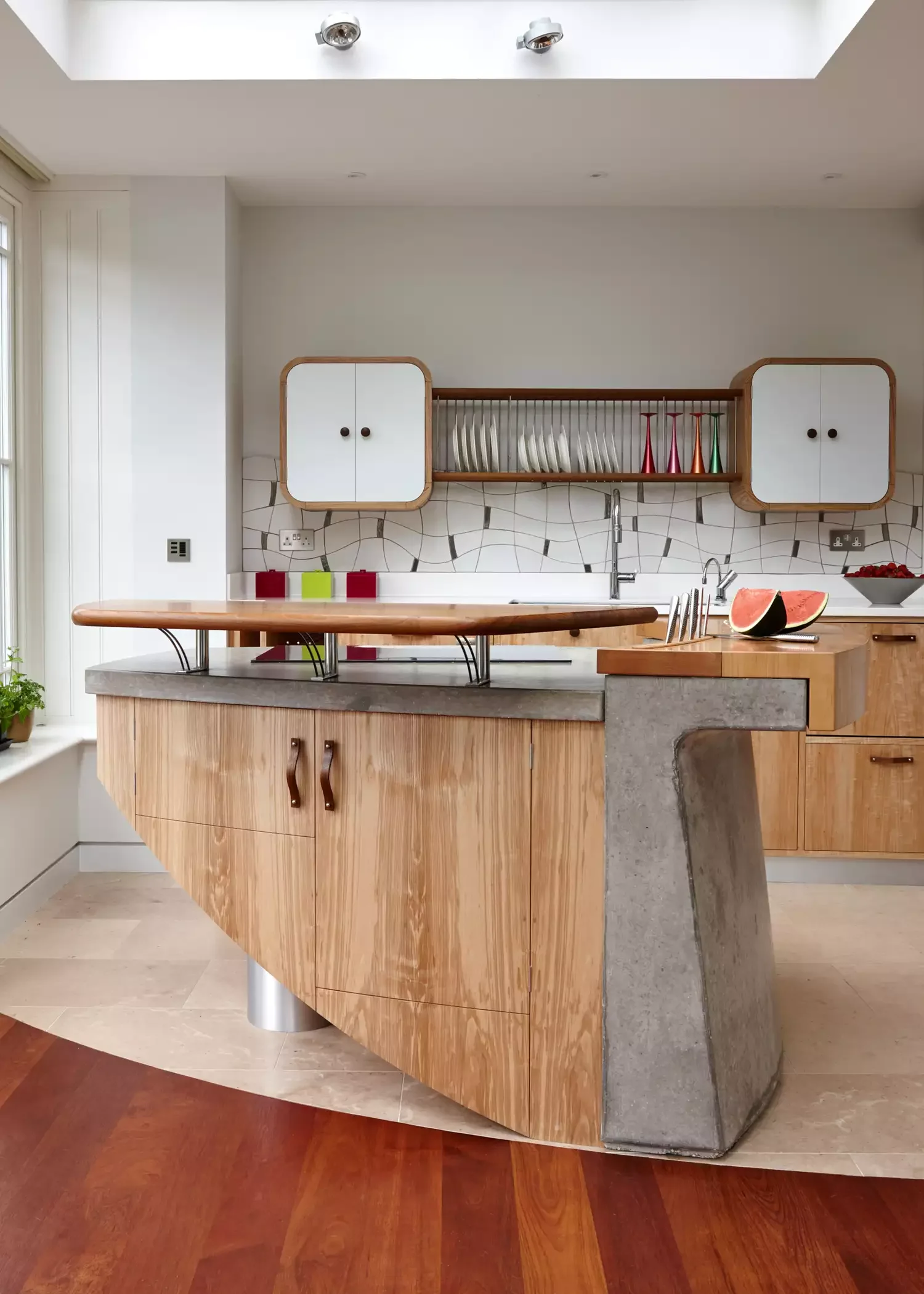
Credit: Design by Johnny Grey Studios / Photo by Benedict Grey
Why stick with straight lines when you can create a fun, curved transition that adds personality to your kitchen?
You can achieve this unique look by laying your kitchen tile over existing wood flooring and cutting it to your desired curved shape for a truly custom appearance.
08. Light and Bright Coordination
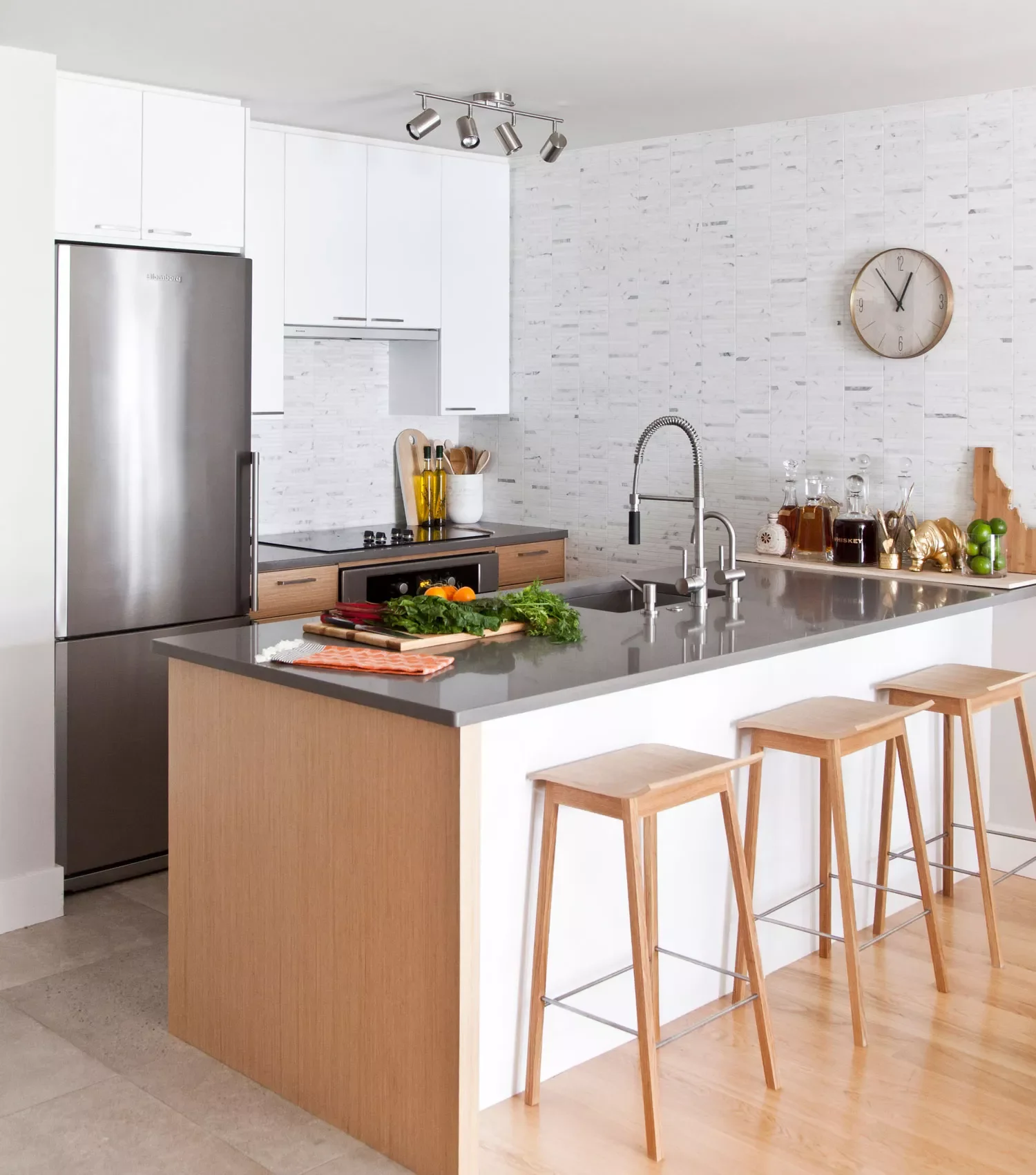
Credit: Design by Form Collective / Photo by Eli Chamberlin
Light-colored tiles transitioning to equally light wooden floors create an airy, spacious feeling throughout your home.
This approach works beautifully when you coordinate with your wooden island frame and lower cabinetry. The unified color palette makes your entire space feel larger and more cohesive.
09. Defined Separation with Thresholds
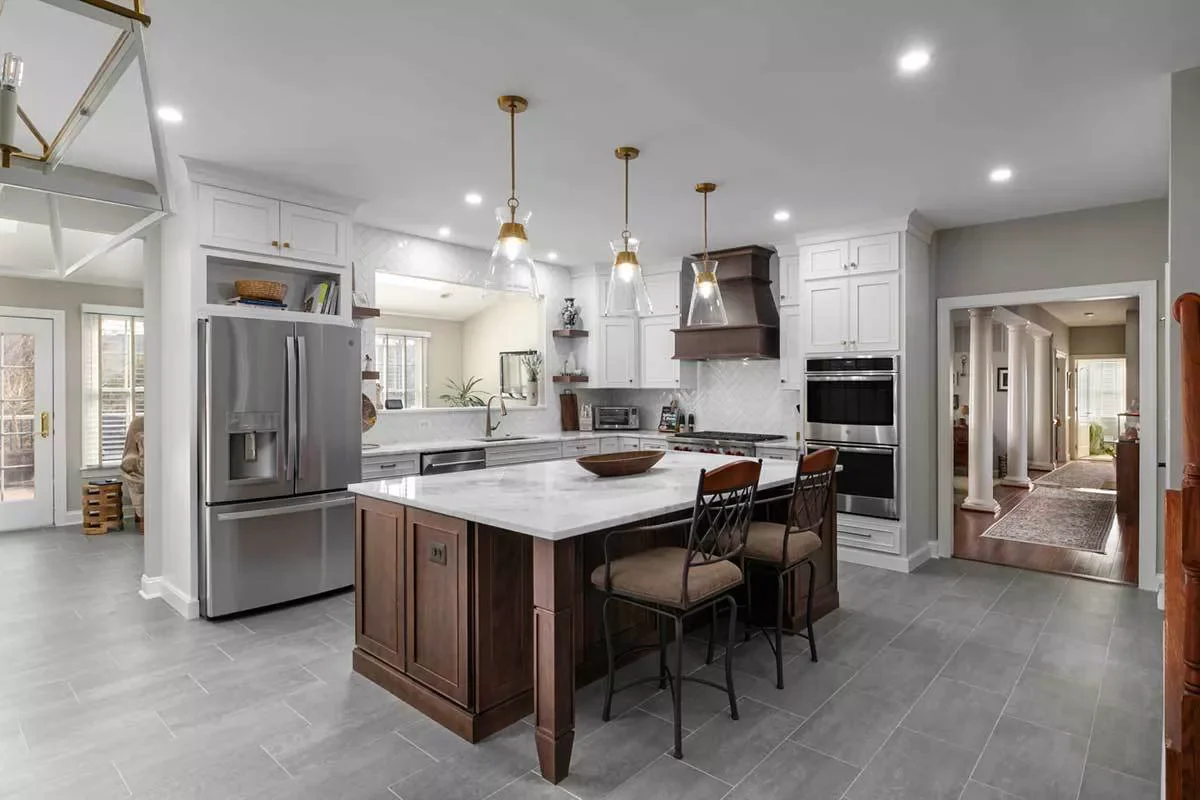
Credit: Design by KBF Audi / Photo by Renee Alexander
Sometimes you want a clear distinction between your kitchen and adjoining spaces, and that’s perfectly fine.
A threshold strip between gray tile and wooden hallway flooring creates a definite boundary while still maintaining visual flow. This approach works especially well in more traditional home layouts.
10. Balancing Patterns with Simplicity

Credit: Design by Form Collective / Photo by Christina Faminoff
When you choose patterned kitchen tile, pair it with simple, solid wood flooring in adjoining spaces to avoid visual overwhelm.
White walls in your dining room add even more simplicity and balance. This thoughtful approach lets your beautiful patterned tile be the star without competing elements.
11. Bold Terrazzo for Maximum Impact
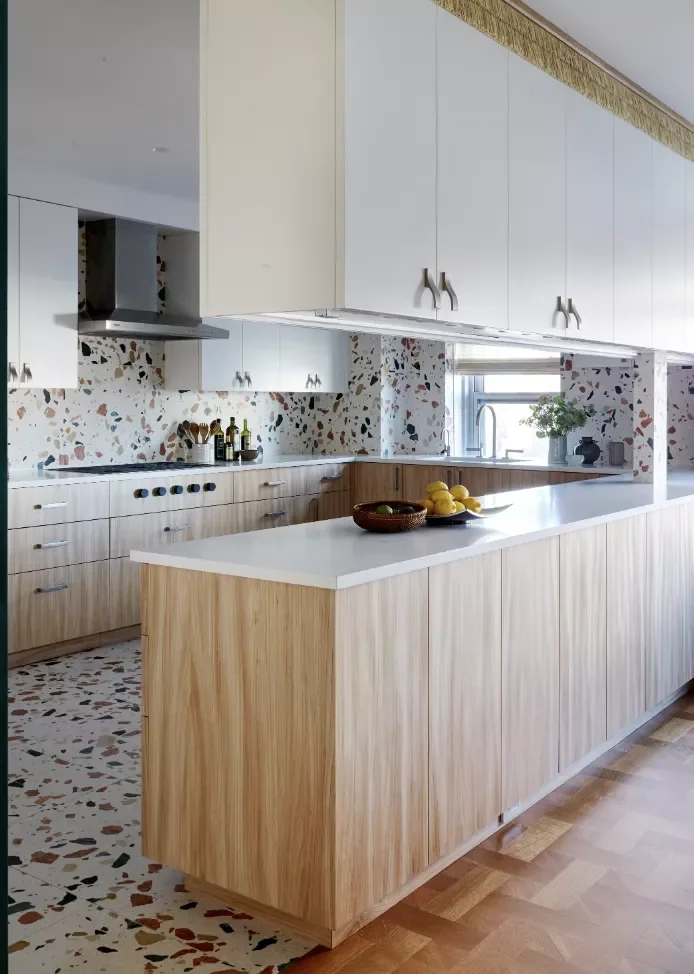
Credit: Design by Ike Baker Velten / Photo by Richard Powers
Terrazzo tile gives you the perfect opportunity to experiment with trending materials that make a serious design statement.
Using it on both floors and backsplash creates dramatic impact, while your adjoining patterned wood floor adds complementary visual interest without competing for attention.
12. Budget-Friendly Peel and Stick Solutions
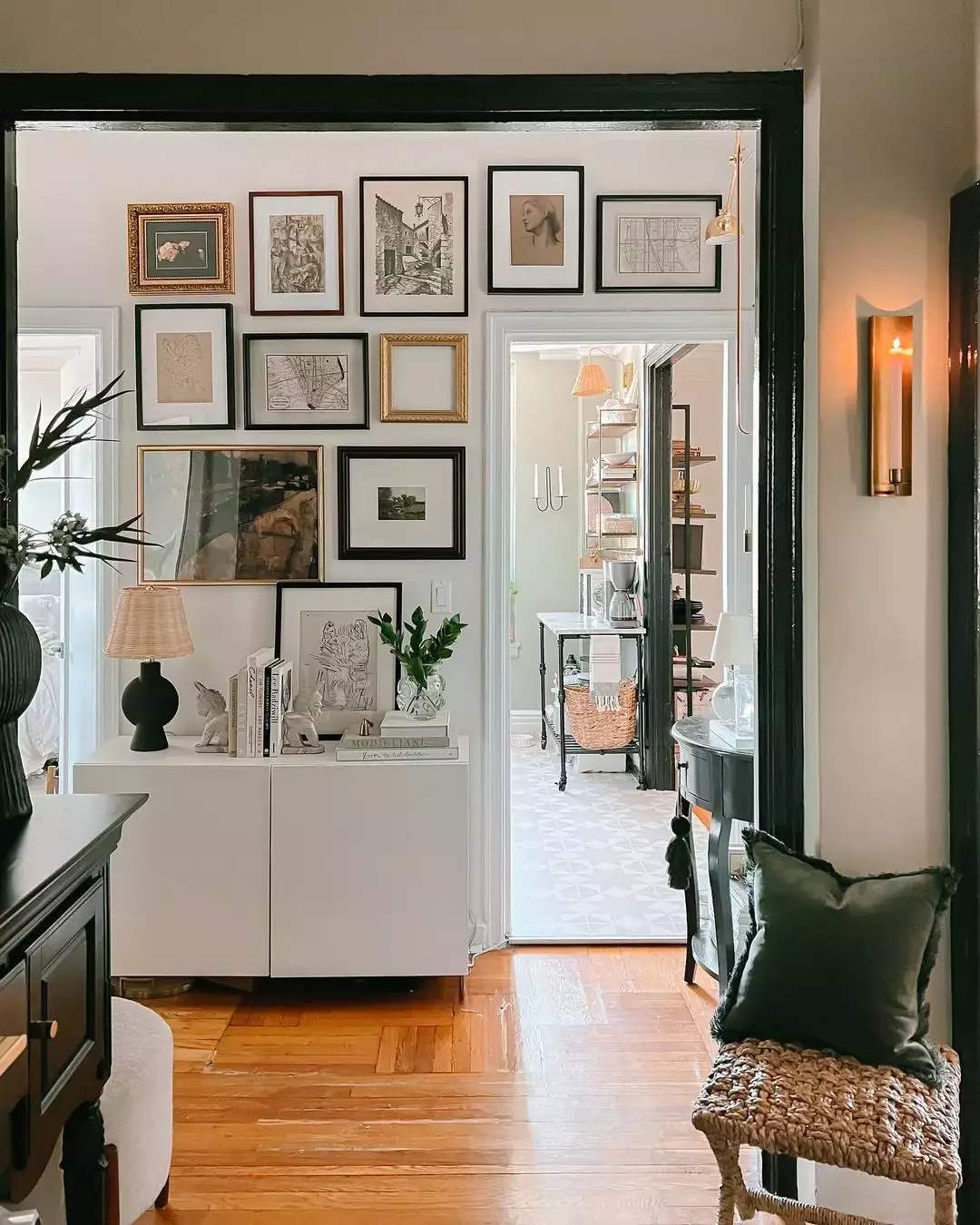
Credit: @mariannesides / Instagram
Peel-and-stick tiles offer you an excellent solution for rental properties or budget-conscious renovations.
Gray and white patterned designs work beautifully in small galley kitchens and city apartments. You’ll get the high-end look you want without the permanent commitment or expensive installation costs.
Final Thoughts
The key to successful kitchen tile to wood transitions lies in thoughtful planning and considering your home’s overall style.
Whether you prefer seamless integration or defined separation, there’s an approach that will work perfectly for your space.
Remember to consider factors like height alignment, color coordination, and pattern balance to create a transition that feels intentional and beautiful.